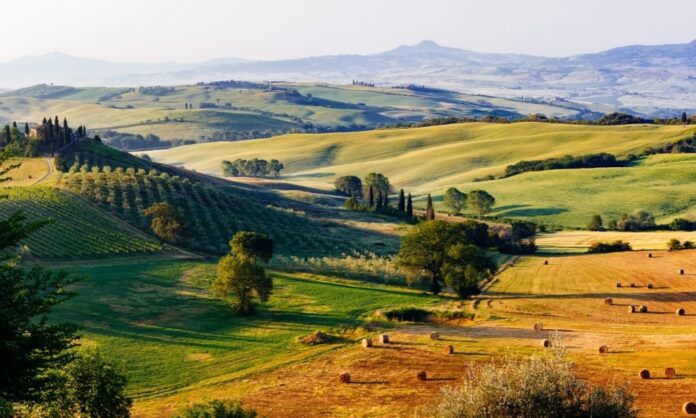
Discover the wines of Tuscany, starting from the history of Tuscan viticulture, terroir and main production areas. We will talk about the Tuscan red wines and the white Tuscan wines, the main grape varieties, the DOC and DOCG, the best wines of Tuscany, the most famous producers and the typical regional gastronomy.
Do you want to show us a winery or a wine? Write to us.
INDICE:
- History of Tuscan viticulture
- Terroir and production areas of Tuscan wines
- Grape varieties and Wines
- Best Tuscan wines
- Tuscan food-wine pairing
HISTORY OF TUSCAN WINES
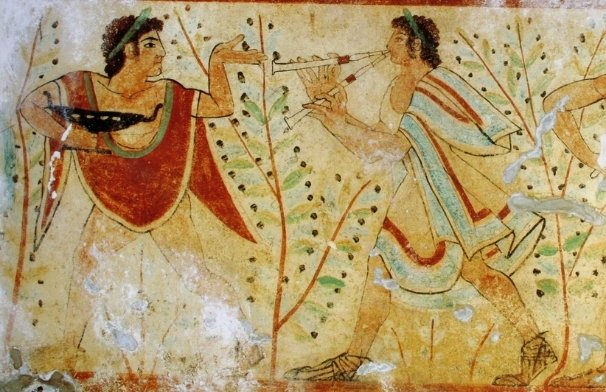
What is the history of Tuscan wines? Viticulture in Tuscany has a thousand-year history, deep and rooted throughout the region: it is said that as early as 500 BC. the ancient Etruscans produced wine in present-day Tuscany.
With the advent of the Roman Empire, wine became an integral part of the daily diet of every social class of the time. Vineyards sprang up in every part of the region, often within cities and monasteries thanks to the Benedictine and Vallombrosan orders.
Furthermore, not only monks and peasants were moved by the passion for wine: just think of the noble Tuscan families such as Frescobaldi, Antinori and Ricasoli who, starting from the Middle Ages, produced the first great Tuscan wines on the splendid hills of this region, names still echo in all wine shops today. In 1282 the Arte dei Vinattieri was founded in Florence, which administered and managed the Tuscan wine trade both in the city and in the countryside.
In 1716 a ban was issued by the Grand Duke of Tuscany Cosimo III in which four wine-growing areas were defined for the first time: Chianti (which roughly includes the current Chianti Classico area), Pomino, Carmignano and Valdarno Superiore. This announcement is in fact the first legal example of DOC.
In 1872 Bettino Ricasoli defined the Chianti formula, a sort of ante-litteram production disciplinary in which the supremacy of Sangiovese was affirmed in the Chianti area and the blending with Canaiolo Nero and Malvasia was exalted.
In 1932 the Chianti wine production area was expanded and the term ‘Classico’ was introduced to distinguish the historical area from the wider one which includes new sub-areas belonging to the provinces of Florence, Siena, Arezzo, Pisa, Pistoia and Prato.
In 1966 Tuscany obtained the recognition of the first DOC of Italy with the Vernaccia di San Gimignano, while the Vino Nobile di Montepulciano and Brunello di Montalcino were the first Italian wines to obtain the DOCG recognition.
The 80s are the period of the enological renaissance of Tuscany which is oriented towards a high quality production. In this period new wine making techniques are introduced, international vines to be combined with Sangiovese and the barriques for the aging of the wines. This is how new blends of Tuscan wines of great international success are born, called Supertuscan, which favor the enological potential of new territories, above all the area of Bolgheri, hitherto ignored.
In recent years there has been a rediscovery of pure Sangiovese and the enhancement of native varieties such as Canaiolo, Colorino, Ciliegiolo, Foglia Tonda, Ansonica, Vermentino Nero, Malvasia Nera, Pugnitello and many others. The success of Tuscan wines is testified by the growing demand in international markets: Tuscany is in fact among the top three Italian regions for wine exports, which constitutes 70% of total regional sales.
DATA ON THE WINES OF TUSCANY
- Vineyard area of Tuscany: ≅ 57861 ettari
- Tuscan red and rosé wines: 85%
- Tuscan white wines: 15%
- Main Grape varieties: Sangiovese (64%), Trebbiano toscano (5%), Merlot (5%), Cabernet Sauvignon (4%), Altri (22%)
- Appellations of Tuscan wines:11 DOCG, 41 DOC, 6 IGT
- Export of Tuscan wines: 70% (United States, Germany, United Kingdom, Switzerland, Canada, Passenger Countries etc.)
TERROIR TUSCAN WINES AND PRODUCTION AREAS
What are the typical terroirs of Tuscany and the production areas of Tuscan wines? Let’s discover the main wine-growing areas of Tuscany, from the wines of Central Tuscany to the Tuscan wines of the Tyrrhenian Coast.
Wines of central Tuscany
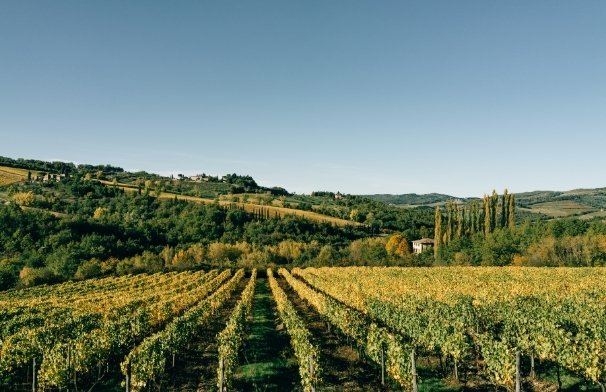
The central part of the region is mainly hilly and has a Mediterranean-type climate, with hot summers and mild winters. The climate gradually becomes more continental and with greater temperature variations approaching the Apennines.
Summers are not very rainy, creating many water problems for the vineyards. The soils are very heterogeneous, however, among these we can identify the alberese, of calcareous origin, and the marl, of a clayey nature, particularly typical and widespread in the Chianti Classico area. The sensational combination of this climate and soils give longevity and elegance to Tuscan wines.
In this area famous Tuscan Sangiovese-based red wines are produced such as Chianti Classico, Brunello di Montalcino, Nobile di Montepulciano, Carmignano and the historic Tuscan white wine par excellence: Vernaccia di San Gimignano.
Central Tuscany has also given birth to countless prestigious international vines such as Cabernet Sauvignon and Cabernet Franc, Merlot, but also Syrah, especially in Cortona and Montecarlo and Pinot Nero in Mugello and Casentino.
Wines of the Tyrrhenian coast
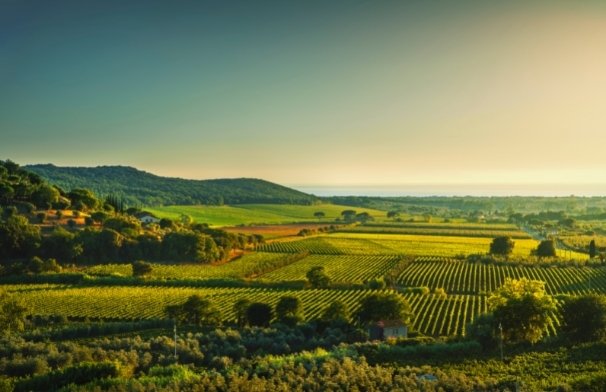
The climate of the Tyrrhenian coast is Mediterranean, characterized by moderate temperature variations and by the presence of sea winds that mitigate the hot and dry summers. The soils of the Livorno coast and northern Tuscany are rich in sand and clay, definitely rich in micronutrients, which favor the structure and flavor of the Tuscan wines of these areas. The Maremma is instead characterized by the presence of calcareous-clayey soils, while in the Grosseto hinterland the soils of volcanic origin prevail.
The most famous Tuscan wines of the Tyrrhenian coast are produced in Bolgheri, starting from international varieties such as Cabernet Sauvignon, Cabernet Franc and Merlot, Syrah. Maremma is instead the homeland of Morellino di Scansano, the famous Tuscan red wine obtained from Sangiovese grape, locally called Morellino.
Among the white grape varieties that make up the Tuscan wines of the Tyrrhenian Coast, the Vermentino stands out, in particular in Bolgheri and in the territory of Candia dei Colli Apuani, and the Ansonica (or Inzolia) widespread mainly in the Maremma, but also in insular Tuscany on the Island of Elba and on the island of Giglio.
GRAPE VARIETIES OF TUSCANY
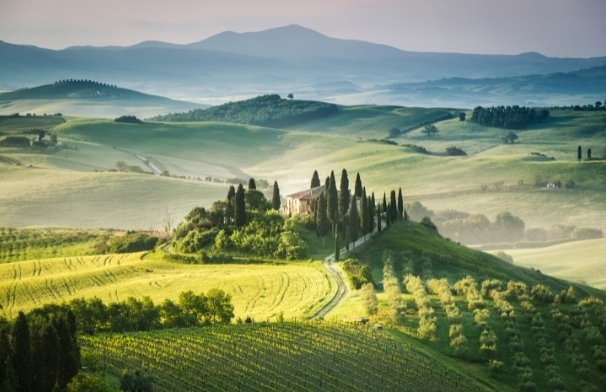
What are the most common grape varieties from which Tuscan wines are produced? Tuscan wines are produced both indigenous and international varieties, with a predominance of black grape varieties (85%).
Native vines – Sangiovese is the most widespread variety in the region and is the main base of many of the best Tuscan red wines, such as Chianti Classico, Vino Nobile di Montepulciano, Brunello di Montalcino, Morellino di Scansano and Carmignano.
Other indigenous varieties widely spread among Tuscan wines are Canaiolo Nero, Colorino, Ciliegiolo and Aleatico for red wines, Vernaccia di San Gimignano, Vermentino, Malvasia del Chianti and Trebbiano Toscano for white wines. In addition, on the Tyrrhenian coast, and in particular in the Maremma and on the island of Elba, Ansonica (or Inzolia) is widespread, from which Tuscan white wines of great interest are born.
Allochthonous vines – The most widespread international varieties among Tuscan wines are Cabernet sauvignon, Cabernet franc and Merlot, particularly widespread in the Bolgheri area and are also often used as complementary vines of Sangiovese, as in the example of Chianti Classico and Carmignano.
Other international grape varieties from which Tuscan wines are produced are Syrah, in particular in Cortona and Lucchese and Pinot Nero, in Casentino and Mugello. As for Tuscan white wines, the most widely used international white grape varieties are Chardonnay, as happens for the Pomino Bianco on the Florentine hills or in the Maremma, and Sauvignon Blanc, which is widespread on the Tyrrhenian coast.
Sangiovese
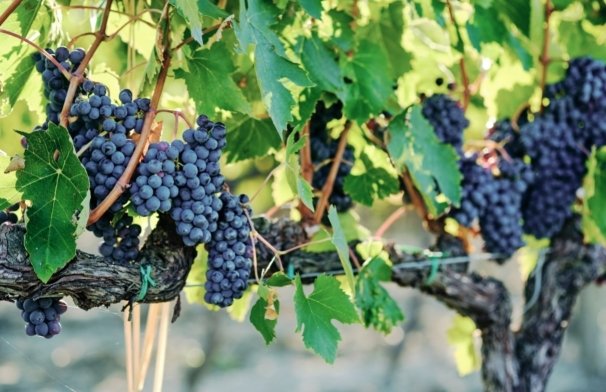
- Hectares in Tuscany:36.524
- Tuscan wines produced with Sangiovese: CHIANTI DOCG, CHIANTI CLASSICO DOCG, BRUNELLO DI MONTALCINO DOCG, CARMIGNANO DOCG, MORELLINO DI SCANSANO DOCG, MONTECUCCO SANGIOVESE DOCG, SUVERETO DOCG, VAL DI CORNIA DOCG, COLLINE LUCCHESI DOC, MAREMMA TOSCANA DOC, ORCIA DOC ecc.
Il Sangiovese è il vitigno principe del centro Italia ed è la colonna portante dei migliori vini rossi toscani. Con i suoi 36.524 ettari di vigneto occupa circa il 65% della produzione regionale.
It is a vine that prefers calcareous-clayey soils and is often blended together with complementary vines, which give more intense colors and contribute in complexity and balance to Tuscan wines. Among the complementary vines we find the traditional Canaiolo and Colorino, and the international ones such as Cabernet, which contributes in structure, Merlot which gives softness, and Syrah, which embellishes the bouquet with spicy notes.
Thanks to its marked acidity and good tannic structure, Sangiovese offers long-lived and elegant wines, such as Brunello di Montalcino, Vino Nobile di Montepulciano and Chianti Classico, but also more immediate and fresh wines such as Morellino di Scansano and wines from Maremma. Sangiovese is also used to produce Tuscan sparkling wines from the Charmat Method and the Classic Method.
To learn more, read the article dedicated to Sangiovese, Brunello di Montalcino, Chianti Classico, Nobile di Montepulciano and Morellino di Scansano.
Vernaccia di San Gimignano
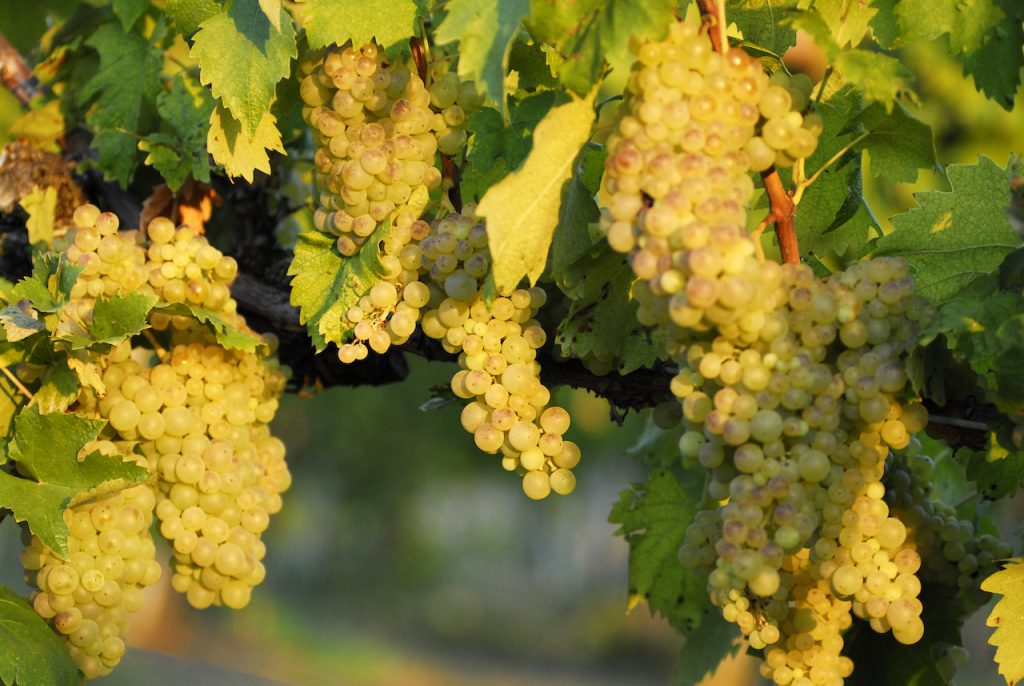
- Hectares in Tuscany: 831
- Tuscan wines produced with Vernaccia di San Gimignano:VERNACCIA DI SAN GIMIGNANO DOCG
Vernaccia di San Gimignano is the vine from which the most historic and iconic Tuscan white wine of the same name is obtained. Vernaccia di San Gimignano is produced in the municipality of San Gimignano, in the province of Siena, a medieval village nestled in the Val D’elsa which is a major attraction for international wine tourism. To learn more, go to the dedicated paragraph Vernaccia di San Gimignano DOCG
Vermentino

- Hectares in Tuscany: 998
- Tuscan wines produced with Vermentino: BOLGHERI VERMENTINO DOC, COLLINE LUCCHESI VERMENTINO DOC, COLLI DI LUNI DOC, VERMENTINO IGT
Vermentino is a white grape variety widespread mainly on the Tyrrhenian coast. It finds its ideal habitat in the territories of the Maremma, Bolgheri and Candia dei Colli Apuani, where Vermentino-based Tuscan white wines are born with great freshness and flavor, with notes of peach, citrus and Mediterranean scrub.
It is vinified almost exclusively in steel, in rare cases it is aged in amphora or barriques. Vermentino is undoubtedly a symbol among the most consumed and appreciated Tuscan wines in the bars along the beaches of the Tyrrhenian coast of Tuscany.
Trebbiano Toscano
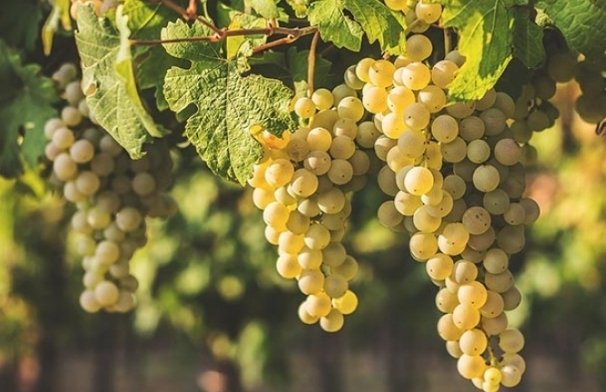
- Hectares in Tuscany:3.617
- Tuscan wines produced with Trebbiano: VIN SANTO DEL CHIANTI DOC, VIN SANTO DI CARMIGNANO DOC, BIANCO DI PITIGLIANO DOC, MAREMMA TOSCANA DOC, VALDICHIANA TOSCANA DOC ecc.
Trebbiano Toscano is the most widespread white grape variety in Tuscany and is the basis of the historic Tuscan Vin Santo.
It is a vine that stands out for its generosity and excellent drying capacity, for the golden and juicy fruit and for its marked acidity, which make it excellent as a base for Charmat and classic method sparkling wines. Most of the Tuscan wines produced with Trebbiano Toscano give life to very immediate wines intended for daily consumption.
Cabernet Franc / Cabernet Sauvignon
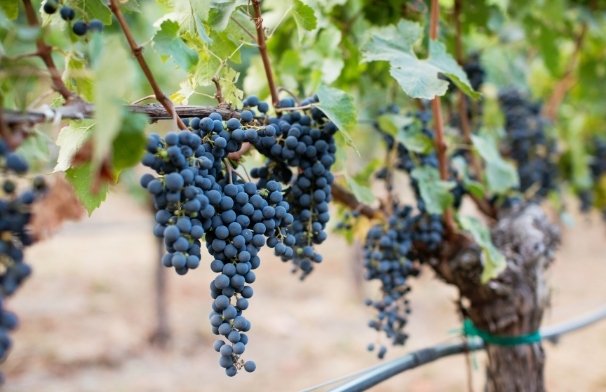
- Hectares in Tuscany:4.027
- Tuscan wines produced with Cabernet: BOLGHERI SASSICAIA DOC, BOLGHERI DOC, CHIANTI CLASSICO DOCG, CHIANTI DOCG, CARMIGNANO DOCG, VAL DI CORNIA DOCG, SUVERETO DOCG, TOSCANA IGT ecc.
Cabernet was used to produce Tuscan wines as early as 1600 in the historic area of Carmignano, where it was called ‘Uva Francesca’
Cabernet Sauvignon and Cabernet Franc are varieties spread throughout the region and are used to make some of the largest and most award-winning Supertuscan Tuscan red wines, of which Sassicaia was a precursor.
Furthermore, Cabernets are often used in blending with other grape varieties, as in the example of the Tuscan wines of Bolgheri, Carmignano, and many other Tuscan DOCG, DOC and IGT red wines.
To learn more, read the article dedicated to Cabernet Franc, Cabernet Sauvignon and Bordeaux Cut Wines.
Merlot
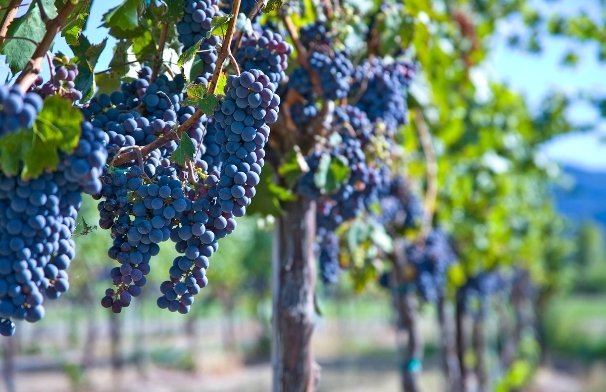
- Ettari in Toscana: 3.968
- Vini Toscani prodotti con Merlot: BOLGHERI DOC, MAREMMA TOSCANA MERLOT DOC, CORTONA MERLOT DOC, COLLINE LUCCHESI MERLOT DOC, MERLOT IGT TOSCANA
Known for its soft and silky tannins, Merlot is a vine originating from Bordeaux with great adaptability. In Tuscany, Merlot is often used in blending with Sangiovese to smooth out its angularity or it is used as a complementary grape together with French grape varieties such as Cabernet Sauvignon, Cabernet Franc, Syrah and Petit Verdot, as in the example of Supertuscan wines and Tuscan wines of Bolgheri DOC.
Merlot is also vinified in purity in many areas of Tuscany, where it acquires an elegant Mediterranean character and gives life to important and award-winning Tuscan wines such as Masseto, Apparita, Messorio, Redigaffi, Galatrona, Baffo Nero, Palazzi, La Ricolma and many others.
To learn more, read the article dedicated to Merlot and the best Italian Merlots.
Syrah
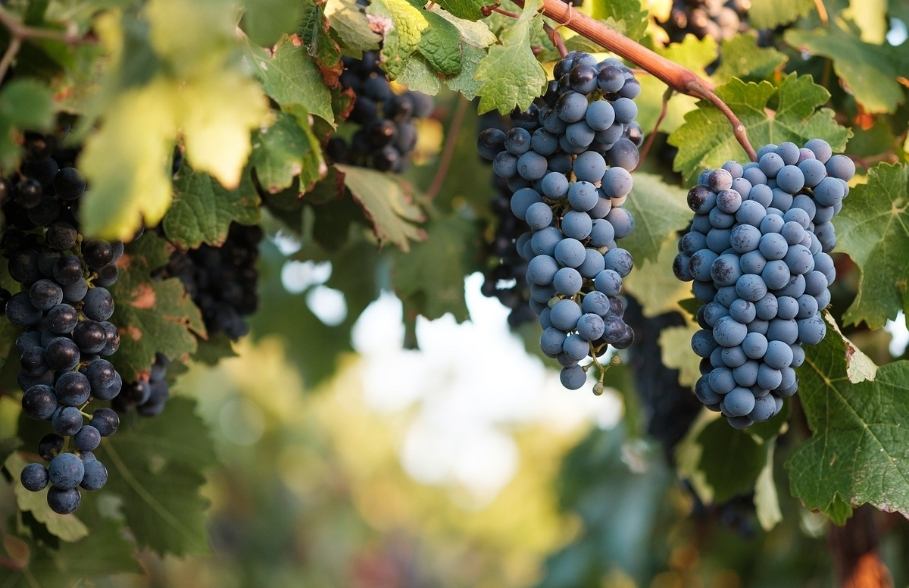
- Ettari in Toscana: 1.068
- Vini Toscani prodotti con Syrah: CORTONA SYRAH DOC
This international variety from the Rhône Valley has found great aptitude in Tuscany, both on the Tyrrhenian coast and in more recent areas of central Tuscany. In particular, Syrah reaches its maximum expression in Cortona, where it acquired the prestigious ‘Cortona DOC’ recognition in 2000 and still represents the symbol of Syrah in Tuscany. Of great historical importance for Syrah di Cortona are the studies conducted by Tenimenti d’Alessandro in 1988 together with Professor Attilio Scienza.
Syrah-based Tuscan wines express intense and deep colors of an intense ruby, often characterized by fruity-spicy scents of blackberry, black cherry, black pepper and balsamic resins and blood notes and are generally endowed with great structure and enveloping. Syrah is also used in Cortona also in rosé vinification to give life to Tuscan rosé wines of excellent freshness and flavor.
To learn more, read the article dedicated to the best Italian Syrahs and the Syrah grape.
Pinot Nero
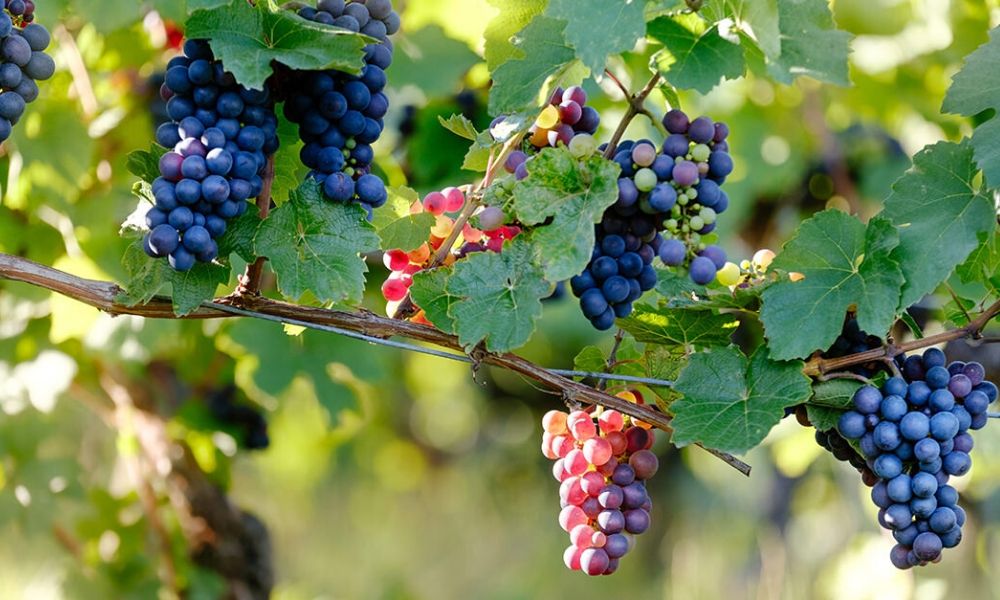
- Ettari in Toscana: N.D.
- Vini Toscani prodotti con Pinot Nero: PINOT NERO IGT TOSCANA, SANT’ANTIMO PINOT NERO DOC
Pinot Noir is a French variety originally from Burgundy, extremely demanding from an agronomic point of view and very difficult to grow in Mediterranean climates.
Despite this, in foothill areas such as Mugello and Casentino, Pinot Nero is able to offer Tuscan wines with great elegance and character, fully among the best Italian Pinot Noirs. Among the pioneers of Pinot Noir in Tuscany we can mention the experience of the Marquises Pancrazi, who decided to plant Pinot Nero in the 1970s on the slopes of Monte Ferrato.
To learn more, read the article dedicated to Pinot Noir in Tuscany.
DOCG, DOC, IGT OF THE BEST TUSCAN WINES
What are the DOCG and DOC of Tuscan wines? Tuscany is one of the regions with the most designations of origin in Italy, with 11 DOCGs, 41 DOCs and 6 IGTs. Impossible not to mention among the most important DOCGs the Chianti DOCG and the Chianti Classico DOCG, the Brunello di Montalcino DOCG, the Vino nobile di Montepulciano DOCG, the Morellino di Scansano DOCG, Montecucco Sangiovese DOCG and the Vernaccia di San Gimignano DOCG.
Among the best DOC of Tuscany stand out Bolgheri DOC the Syrah DOC of Cortona but also the Rosso di Montalcino DOC, the Rosso di Montepulciano DOC, the wines of Orcia DOC, DOC Maremma Toscana, and many others.
Let’s discover the appellations of origin of Tuscany with greater resonance:
BRUNELLO DI MONTALCINO DOCG
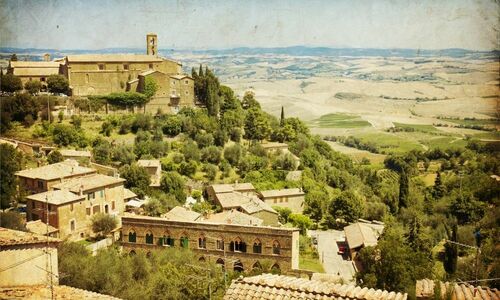
Historic Tuscan red wine based on pure Sangiovese (100%) born from the intuition of the pharmacist Clemente Santi. Brunello di Montalcino requires a long aging of at least 5 years, between aging in oak wood (min. 2 years) and bottle and is considered, together with Barolo, the longest-lived wine in Italy.
It is a Tuscan wine with a ruby red color, tending to garnet with aging, with characteristic aromas of ripe red fruit, violet, spices and notes of tobacco, coffee and goudron. On the palate it is harmonious, intense and persistent, with a strong tannic component and freshness that allow great longevity and evolution over time.
The Tuscan wines of Montalcino are produced in three types: Rosso di Montalcino, Brunello di Montalcino and Brunello di Montalcino Riserva. Of great interest among Tuscan wines is Moscadello di Montalcino, a sweet passito wine of great elegance obtained from Moscato Bianco.
To learn more, read the article dedicated to Brunello di Montalcino and the articles dedicated to the best producers of Brunello di Montalcino.
CHIANTI CLASSICO DOCG
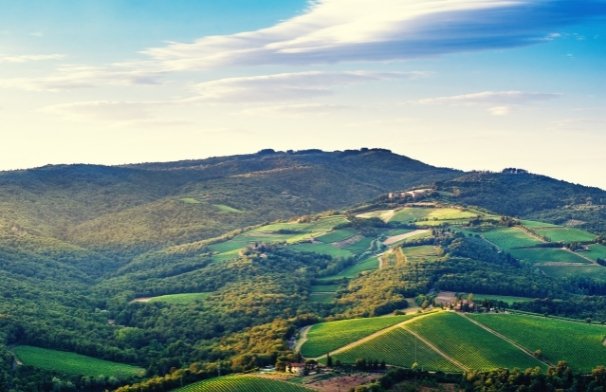
Represented in the world by the historic logo of the Black Rooster, Chianti Classico DOCG is one of the most appreciated and universally recognized Tuscan wines in the world. Chianti Classico is produced in nine historic municipalities between Siena and Florence (Chianti), an area historically recognized as one of the most suitable for the production of Tuscan wines.
The wine is produced starting from the Sangiovese grape (min. 85%) plus other international grape varieties such as Cabernet Sauvignon and Franc (max. 15%), Merlot and Syrah and traditional varieties such as Canaiolo and Colorino, which enhance its aromas and intensify its color.
Chianti Classico in three types: Vintage, Reserve and Grand Selection, each with specific production rules that identify the qualitative pyramid of wines.
Chianti Classico is a Tuscan wine with a slightly transparent ruby red color that becomes garnet in the most advanced wines. It is characterized by aromas of violet and cherry blend with berries and blood orange, balsamic and spicy notes, in some cases even wild. Among the distinctive features of this Tuscan red wine we find elegance and harmony, but also an excellent acidity and a strong tannin that make it suitable for aging.
A very interesting production niche among Tuscan wines is Vin San del Chianti Classico, a sweet passito wine obtained from Malvasia Bianca and / or Trebbiano Toscano. If produced from Sangiovese grapes it acquires the Vin Santo del Chianti Classico ‘Occhio di Pernice’ mention.
To learn more, read the article dedicated to Chianti Classico and the articles dedicated to the best producers of Chianti Classico.
CHIANTI DOCG
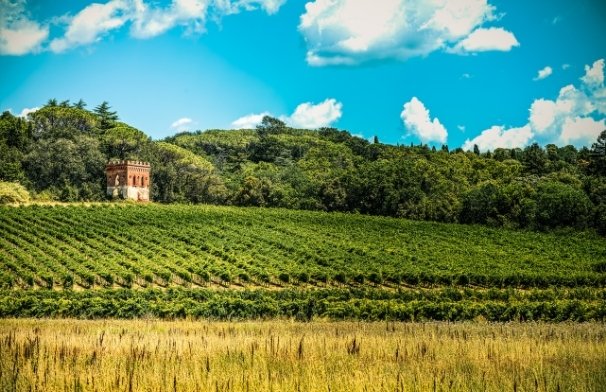
Chianti DOCG wine is a Tuscan wine produced in a large territory between the provinces of Florence, Siena, Arezzo, Pisa, Pistoia, Prato. Chianti wine was recognized in 1932 by the expansion of the classic production area of the historic Tuscan wine.
Following the extension of the production area, the term ‘Chianti Classico’ was introduced to distinguish the historic area from the larger and more recent one of Chianti. The latter in turn is divided into the subzones: Aretini Hills, Florentine Hills, Pisan Hills, Sienese Hills, Montalbano and Rùfina and Montespertoli.
Chianti DOCG is produced from Sangiovese grapes (min.70%) and other complementary vines such as Canaiolo and Colorino and international varieties.
Chianti is a Tuscan red wine with marked acidity and good tannic structure, which give both freshness and elegance. It typically has a ruby red color tending to garnet with aging, with typical hints of violet, red fruits, especially cherries and raspberries.
Generally, the Chianti DOCG Tuscan wines give life to immediate and fresh wines, more oriented to daily consumption and with a lower aging potential, even if there are exceptions that represent interesting qualitative peaks.
VINO NOBILE DI MONTEPULCIANO DOCG
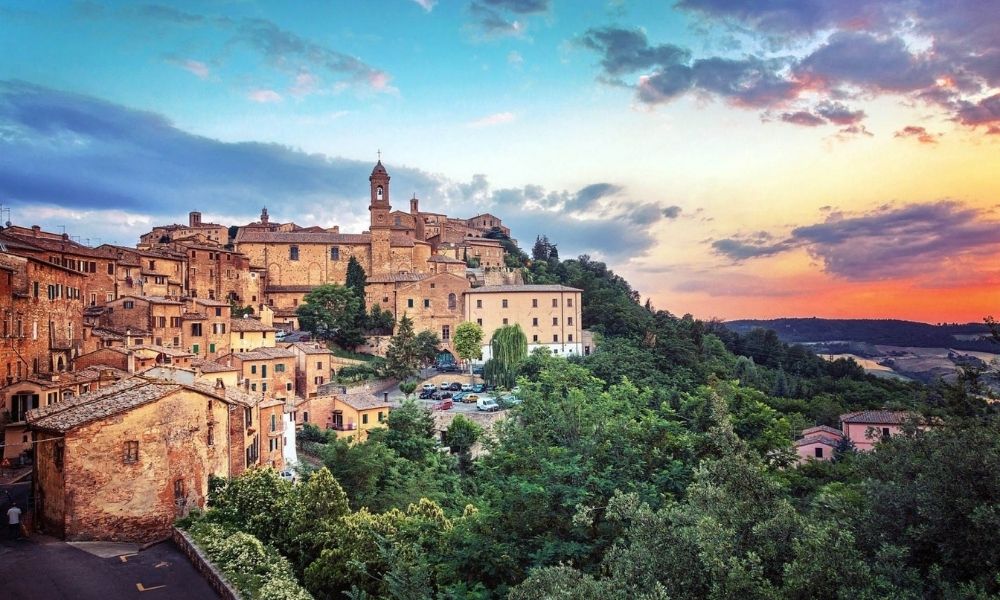
The Vino Nobile di Montepulciano is a great Tuscan red wine based on Sangiovese (70% min.) And other grape varieties such as Canaiolo and Colorino, and the international Merlot and Cabernet. It requires a minimum aging of two years which become three in the ” Riserva ” type. It is also the first red wine in Italy, together with Brunello di Montalcino, to have received the DOCG recognition in Italy.
This wine is endowed with great balance and elegance and represents one of the best expressions of Tuscan wines made with Sangiovese. The color is intense ruby red and expresses aromas of violet and red fruits that become more complex with aging. It is a full and soft Tuscan red wine, with great structure and one of the best suited for aging.
Rosso di Montepulciano is also produced in the territory of Montepulciano, a younger and more immediate wine ideal for daily consumption.
To learn more, read the article on Vino Nobile di Montepulciano and the articles dedicated to the best producers of Vino Nobile di Montepulciano
VERNACCIA DI SAN GIMIGNANO DOCG
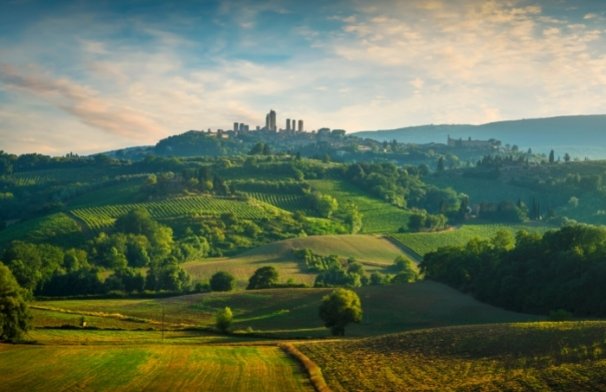
Iconic Tuscan white wine produced in the municipality of San Gimignano, in the province of Siena, a medieval village that represents a sensational attraction for international wine tourism. Vernaccia di San di San Gimignano has a long documented history since 1000 AD: it is in fact mentioned by Dante, Boccaccio and Francesco Redi and was requested in abundance by the Medici during the Renaissance to brighten their best banquets and weddings. Furthermore, it was the first Italian wine to boast the prestigious DOC appellation in 1966.
White in the land of red wines, Vernaccia di San Gimignano is highly appreciated for its longevity and ability to develop sensational aromas with aging. It also boasts the primacy of the first DOC in Italy and is the only Tuscan white wine to boast the DOCG.
Vernaccia di San Gimignano is a Tuscan white wine obtained from the vine of the same name (85% min.) Plus other non-aromatic white grape varieties.
It has a pale straw yellow color with golden reflections, with floral and fruity aromas in young wines that are embellished with notes of flint and salt with aging. On the palate they are white wines with excellent structure and moderate acidity, characterized by an excellent mineral flavor and persistence. It is produced in the Vintage versions, the first to be put on the market, the Riserva version with prolonged refinement, and the Cru version obtained from the most suitable company vineyard.
To learn more, read the article on Vernaccia di San Gimignano and dedicated articles on the best producers of Vernaccia di San Gimignano
BOLGHERI DOC
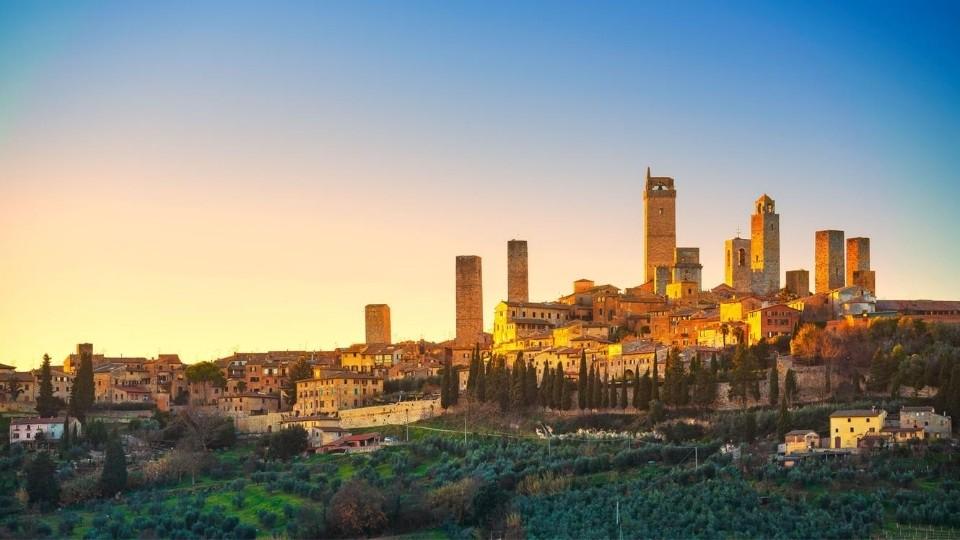
The Tuscan wines of Bolgheri owe their success to the famous Sassicaia wine by Mario Incisa della Rocchetta from Tenuta San Guido. Mario Incisa, after having found similarities between Bolgheri and the Médoc territory in Bordeaux, planted cuttings of Cabernet Sauvignon and Cabernet Franc in the 1940s, realizing what would become one of the most famous Italian red wines in the world.
The international success of Sassicaia starting from the 1980s inspired many producers, who began producing Tuscan Bordeaux-style red wines in Bolgheri using French vines and modern winemaking techniques. These Tuscan red wines met with great international success and allowed the redevelopment of Bolgheri, a marshy area that had not been considered suitable for wine production until then.
Bolgheri DOC wine, whether superior or not, can be produced with Cabernet Sauvignon, Merlot, Cabernet Franc (up to 100%), Syrah and Sangiovese (no more than 50%) and with any complementary products (no more than 30%) . In the case of the white Bolgheri DOC, Vermentino is used, often vinified alone, and in some cases with complementary vines such as Sauvignon Blanc and Viognier.
The Tuscan wines of Bolgheri have deep ruby red colors, intense aromas of blackberries and currants, juniper, spices and Mediterranean scrub, often embellished with tertiary and woody notes conferred by aging in barriques. Bolgheri’s Tuscan wines are endowed with a great polyphenolic set and aging potential. They are perfect to taste with game and complex dishes but also excellent as meditation wines.
To find out more, watch the video dedicated to Bolgheri.
MORELLINO DI SCANSANO DOCG
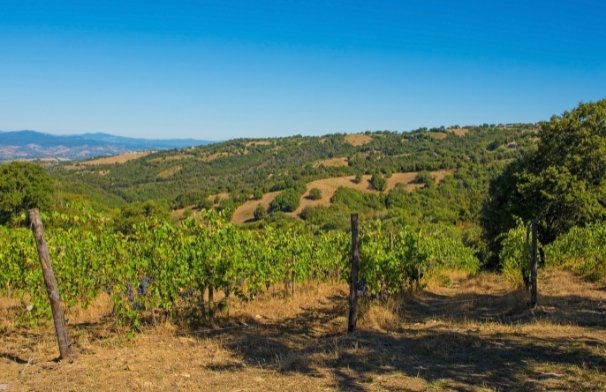
Morellino di Scansano DOCG is a Tuscan red wine with great personality and which fully represents the territory of the Tuscan Maremma. It is produced in the ” base ” and ” Riserva ” types starting from Sangiovese (85% min.) And other complementary both international and indigenous.
It has a ruby red color tending to garnet with refinement, a vinous and intense aroma, rich in red fruits and balsamic notes. The Tuscan wines of this area are characterized by lively tannins and a marked acidity on the palate, which make this wine well structured but at the same time fresh and immediate.
To learn more, read the article dedicated to the Morellinos of Scansano
CARMIGNANO DOCG
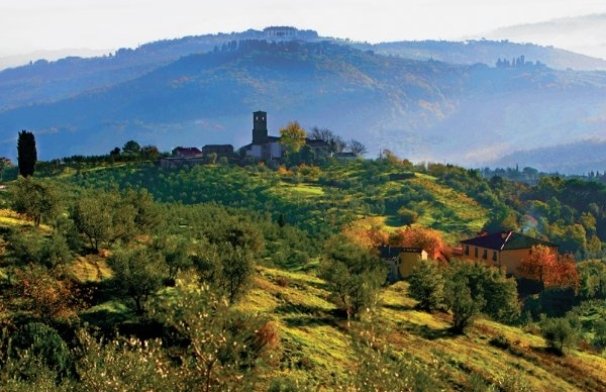
The Carmignano DOCG is located west of Florence, between the Florentine and Prato hills, in the municipality of Carmignano and Poggio a Caiano. It is detached from Chianti mainly for the blend: Sangiovese (min. 50%), Canaiolo Nero (max. 20%) and Cabernet Sauvignon and Franc (up to 20%).
The Tuscan wines produced in this area are therefore very influenced by the blend, more vigorous and structured with Cabernets, fresher and more elegant where Sangiovese dominates.
It should be remembered that the custom of assembling Sangiovese with Cabernet was already widespread in Carmignano since the 1600s. Cabernet Franc was in fact imported from France by the Medici and was called at the time ‘grape francesca’. Carmignano can therefore be considered the true Supertuscan ante litteram.
Do you want to indicate a winery or wine? Write to us.
GASTRONOMY: FOOD AND TRADITION OF TUSCANY

What to pair the best wines of Tuscany with?
Tuscany is rich in culinary history, anecdotes and tradition that make this region an Italian gastronomic scenario of great interest. Land of gastronomic excellences such as Chianina and Maremmana beef, Cinta Senese pig but also game such as duck, hare and wild boar.
Tuscan bread is a symbol of Tuscan gastronomy and is distinguished by the lack of salt, so much so that it is called silly or unsalted bread. It is precisely from the reuse of stale bread that many iconic dishes of Tuscan poor cuisine are born: pappa al pomodoro and ribollita, but also panzanella and Maremma aquacotta.
Among the starters, pork-based dishes are popular. Typical Tuscan appetizer with cold cuts, such as Tuscan ham, finocchiona and soprassata, rigatino and buristo, strictly accompanied by Tuscan livers toast.
The first courses are generally based on complex sauces often based on game and white meats such as the famous pappardelle with wild boar or hare sauce. Other very characteristic Tuscan first courses are Mugello potato tortelli, Maremma tortelli, pici all’aglione and gnudi.
Boar scald
Among the second courses to try in Tuscany we find the famous Florentine steak, a very tall and tasty cut of Chianina or Maremmana meat to be cooked on the grill or on the grill and served very rare. Among the second courses based on meat there are countless stews and braised meats such as the Peposo dell’Impruneta, the Sangiovannese-style Stracotto, the Wild Boar Scottiglia.
Also from the beef are born iconic dishes of Tuscan cuisine such as the Florentine tripe and the Lampredotto, but also the tongue, the cheek and the livers, all dishes that can be opened in the classic Tuscan street-food.
Not least the Tuscan soups and minestrone, generally of black cabbage, but also the beans all’uccelletto, inevitable in the typical Tuscan taverns.
On the Tyrrhenian coast we find fish-based specialties, such as Cacciucco alla livornese or cod alla maremma, as well as a passion for fried rock fish and shellfish.
Finally, there are many traditional Tuscan desserts. Among these are the cantucci di Prato which go perfectly with Tuscan vin santo, or other typical sweets such as the Florentine schiacciata, the grape schiacciata, the brigidini, the Sienese panforte and many others.
What are the best Tuscan wines?
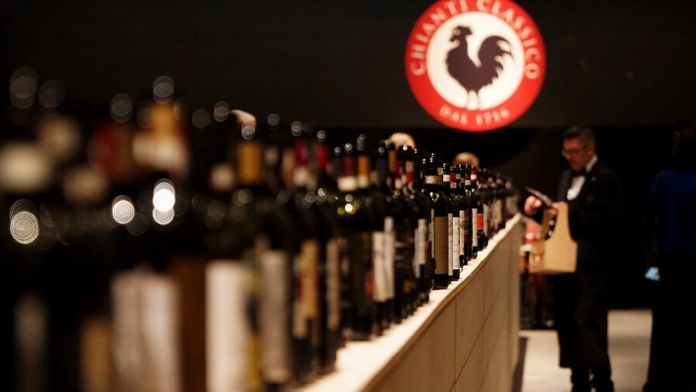
What are the best Tuscan wines? Choosing is a difficult undertaking, which in any case inevitably lies within the limits of a subjective opinion, which as such, by definition, is deficient and arbitrary. We have compiled our list of virtuous quality interpretations of Tuscan wines from the best wineries according to our evaluations.
However, it remains essential to underline that the best Tuscan wines are those that are able to excite us, even by binding themselves to contingent situations and unrepeatable and intimate moments of our life. Therefore, we invite you to discover all the wineries that produce Tuscan wines in their uniqueness, so that you can independently find and choose the wine that can be counted for you among your best Tuscan wines.





